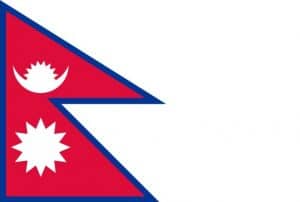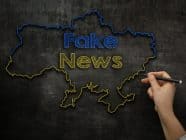 Nepal’s independent media have refused to bow to political pressure and have persisted in holding the government to account over its handling of the pandemic. Prime Minister KP Sharma Oli has on several occasions expressed his irritation at media criticism of his policies.
Nepal’s independent media have refused to bow to political pressure and have persisted in holding the government to account over its handling of the pandemic. Prime Minister KP Sharma Oli has on several occasions expressed his irritation at media criticism of his policies.
Nepali media back calls for vigilance
The Nepali media have been following the progress of the coronavirus closely and issuing warnings over the implications of its spread to Nepal ever since the virus first emerged in the Chinese city of Wuhan. Long before coronavirus developed into a global pandemic, there were three very good reasons to worry about the possibility that the new disease could reach Nepal. Firstly, the government had already launched its “Visit Nepal 2020” campaign with the aim of attracting two million tourists to the country. For some years now, the majority of tourists arriving in Nepal by plane have come from China. Secondly, more than seven million Nepalis – almost a quarter of the country’s population – live and work abroad, most of them in countries such as India, Malaysia, South Korea and Japan. There is hardly a single Nepali family that does not have a member who is a migrant labourer. And finally, the fact that Nepal ranks 147 out of 189 countries in the UN’s Human Development Index for 2019 shows that the healthcare system does not have the resources to cope with a major health emergency. There is a shortage of doctors, hospital beds, ventilators, ICUs and PPE even at the best of times.
The media began to cover the Wuhan outbreak and to urge the authorities to take steps to ensure that Nepal was prepared for its arrival in the country early on. For example, on 9 January The Himalayan Times carried a Reuters report about the deadly “new type of virus”. Only two weeks later, the first case of coronavirus in Nepal was registered when the Epidemiology and Disease Control Division confirmed that a Nepali student who had returned from Wuhan earlier in the month had tested positive for the virus. This was reported by The Kathmandu Post on 24 January, a day after Wuhan had been put into lockdown by the Chinese authorities in an effort to contain the spread of Covid-19.
Over the next few days, many Nepali news outlets including Republica carried a story about how the World Health Organization (WHO) was urging Nepal to remain vigilant and ensure that it was in a position to detect any new cases of coronavirus and take any necessary action promptly. Meanwhile, The Kathmandu Post , which had earlier accused the Nepali government of being slow to react, now complained that the authorities’ response was “lackadaisical” given the seriousness of the threat.
Government bows to pressure
At first, the government paid little attention to the warnings of the experts who were regularly quoted by the media. On the contrary: the “Visit Nepal 2020” campaign was kept up. Some ministers even claimed that Nepal was a “Covid-19-free country”, pointing out that the man who had tested positive for the disease in January had recovered and that no other cases had come to light. The Ministry for Tourism and Civil Aviation instructed all Nepali diplomatic staff to spread the word that Nepal was open for business.
It was not until early March that the government bowed to the relentlessly mounting pressure and began to introduce stricter measures designed to limit the spread of the disease. The visa-on-arrival service was suspended for nationals of countries particularly badly affected by Covid-19 and foreigners were barred from climbing Mount Everest. From mid-March onwards, even more severe restrictions were introduced. On 20 March the government banned all passengers, including Nepalis, from entering the country from most of the rest of the world. On 24 March, a country-wide lockdown came into effect. By 1 May, 59 cases of Covid-19 had been confirmed in Nepal, with no deaths directly attributable to the disease.
Pressure on media
The Nepali media have throughout kept a watchful eye on how the unfolding coronavirus story was being covered elsewhere. On 18 February, The Kathmandu Post ‘s reprint of an article by a former US ambassador to NATO originally published by The Korea Herald incurred the wrath of the Chinese embassy in Kathmandu. The article was headlined “China’s secrecy has made coronavirus crisis much worse” and was accompanied by an illustration showing Mao Zedong wearing a face-mask.
The embassy responded with a strongly worded statement condemning The Kathmandu Post and its outgoing editor-in-chief Anup Kaphle, labelling him “a parrot of some anti-China forces”. The statement added: “The Chinese embassy in Nepal has made solemn representations to the newspaper… and reserves the right of further action.”
A group of 17 editors of Nepali dailies and news websites objected to the threat contained in the embassy’s statement, and issued their own statement condemning its attempt to intimidate a Nepali media outlet. “We respect the right of an individual or organisation to express their disagreement over materials published in the media,” the editors said in their statement. “But we disagree with the disparagement and threats issued by naming any particular editor. We condemn such an act.” The editors declared that “Nepal’s constitution has guaranteed full press freedom, and we are committed to exercising and protecting it.” The Federation of Nepalese Journalist (FNJ) also condemned the Chinese embassy’s statement.
Veteran Nepali journalist Yubaraj Ghimire – the editor of the online outlet Deshsanchar – subsequently noted that China was not alone in resorting to such tactics. He revealed that representatives of the US and Indian embassies had in the past also issued veiled threats to the Nepali media. The media community hoped that the Nepali government might gently remind the Chinese embassy that Nepal enjoys press freedom and that the latter would issue an apology. However, no such gesture has yet been forthcoming.
Before long, another Nepali media outlet was subjected to a different kind of political pressure. On 1 April, a news website, The Kathmandu Press, published a report about a controversial PPE procurement deal with China, in which it alleged that the relatives of several senior government officials had been involved. The following day, The Kathmandu Press issued a statement alleging that the report had been removed by the website’s developer, Shiran Technologies, a company co-owned by Prime Minister KP Sharma Oli’s IT advisor. The statement said that the website’s editor had come under political pressure to withdraw the report, and when he refused, it was taken down by the developer. The journalistic staff of The Kathmandu Press, the FNJ and the International Federation of Journalists (IFJ) all condemned this action. The FNJ issued a statement describing it as “an unconstitutional step” and “direct interference on freedom of expression.”
Mounting tensions
Despite these obstacles, the Nepali media have persisted in exposing dubious practices and holding the government to account over its handling of the pandemic. This has not gone down well with the country’s leadership. On 7 April, the prime minister gave an address to the nation in which he urged Nepalis “to support and show solidarity with the government’s efforts” by continuing to comply with the lockdown. In a veiled allusion to critics of government policy, he called on people to choose life over personal freedom. Some observers took exception to this statement, saying that people should not be expected to give up freedom in exchange for security.
The prime minister has also expressed his irritation at the media’s highlighting of the plight of the most disadvantaged sectors of society, who have struggled the most to survive the weeks of lockdown. One of the hardest-hit groups are the daily labourers who had come to Kathmandu and other cities to find work and were left without any way of feeding their families once the lockdown was imposed. A mass exodus from the cities ensued, with thousands of daily wage workers attempting to return home, often walking hundreds of miles with their children, in contravention of the lockdown restrictions on movement. Some of them came into confrontation with law enforcement agents, and by mid-April cases such as these were dominating the headlines. Sharma Oli voiced his exasperation with these reports, demanding to know how the media knew more about the situation than the authorities did.
And on 1 May, Oli used a video message marking International Labour Day to accuse the Nepali media of creating instability in the country. “Today, some media of Nepal and social media are engaged in disseminating news and other discussions that push the country towards instability,” Oli said. “On the one hand, the entire citizenry, along with the world, is fighting against the coronavirus pandemic; but on the other, there are efforts of instability taking advantage of this situation,” he added, noting that the government would do its utmost to foil such efforts.
Print editions suspended
Some leading news titles, including Kantipur, The Kathmandu Post, Nepali Times, Himal Magazine and The Himalayan Times suspended their print editions when the lockdown was imposed. However, Kantipur and The Kathmandu Post resumed their print editions at the beginning of April. Other news dailies, including Nayapatrika, Annapurna Post and Nagarik, never stopped their print editions. Nagarik even announced that it would distribute copies free of charge for the duration of the lockdown.
Most journalists now work from home as much as possible. However, some media workers such as news presenters, photographers or film crews have continued to work from the office or to do field reporting. The government has provided them with special permits to enable them to carry out their duties during the lockdown.
Meanwhile, both the media and the public have expressed concern over the spread of misinformation, disinformation and fake news relating to the coronavirus. The country’s press regulator, the Press Council Nepal, has shut down 25 unregistered websites which were found to have infringed the Council’s code of conduct and to have been active in disseminating fake news.
This is an updated version of an article that originally appeared on EJO’s German-language site with the headline “Nepal: Die Corona-Krise und die Medien“.
Opinions expressed on this website are those of the authors alone and do not necessarily reflect or represent the views, policies or positions of the EJO.
See “How media worldwide are covering the coronavirus crisis” for a complete list of EJO articles in English devoted to this topic.
Tags: coronavirus, Covid-19, dis/misinformation, Media Freedom, political pressure













































